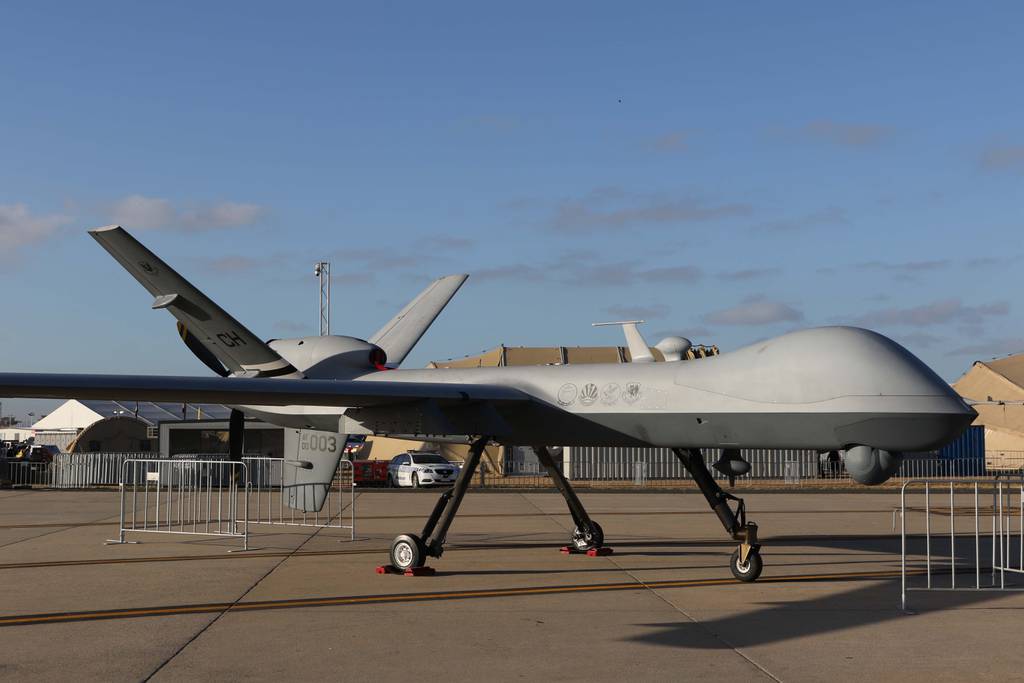
CHRISTCHURCH, New Zealand — Taiwan’s plan to field four MQ-9B SkyGuardian drones has advanced thanks to a second contract awarded to General Atomics Aeronautical Systems.
The island nation’s purchase comes as its own efforts to field a similar domestically developed platform falter.
The U.S. Defense Department signed the $250 million deal with General Atomics for the final two MQ-9Bs on March 11 through the government’s Foreign Military Sales program.
The award followed an initial contract dated May 1, 2023. That $217.6 million deal promised the delivery of two aircraft by May 2025. However, a U.S. Air Force spokesperson told Defense News the first two drones will arrive in 2026 and the final pair in 2027.
Must Read: Australia Authorized by US State Department to Purchase MQ-9B Drones
The spokesperson clarified that this contract action was “re-announced because they broke the contract into two separate actions, each for two MQ-9s.”
Taiwan will also receive two ground control stations as part of the agreements.
The U.S. government had approved this sale in November 2020, stating that MQ-9s would give Taiwan “intelligence, surveillance and reconnaissance (ISR), target acquisition, and counter-land, counter-sea and anti-submarine strike capabilities.”
These drones could take over some missions performed by Taiwan’s fighter fleet that is already busy monitoring Chinese military activities in the surrounding airspace and sea. Beijing considers the island nation a rogue province and has threatened to take it back by force.
“It’s an important ISR platform for the Taiwan military, giving them a cutting-edge platform to improve their ability to monitor China’s gray zone activities. In a time of war, the MQ-9 can also be used in hunter-killer roles,” Rupert Hammond-Chambers, president of the US-Taiwan Business Council, told Defense News.
The arrival of these SkyGuardians is particularly important, given Taiwan’s Teng Yun medium-altitude, long-endurance drone, currently under development by the National Chung-Shan Institute of Science and Technology, is encountering difficulties. In January, Taiwan’s Central News Agency reported the Teng Yun 2 had “not passed its combat readiness testing phase, with initial results finding there was still room for improvement.”
:quality(70)/cloudfront-us-east-1.images.arcpublishing.com/archetype/N5ENN2BXTRFZVF6P26P7GBDHKU.JPG)
Taiwan defense analyst Chen Kuo-ming said the Teng Yun has made insufficient progress since its 2015 unveiling. “In the past year there have been lots of tests. However, I’m worried about the Teng Yun because its progress, compared with Chinese UAVs, is so slow,” the expert noted.
Nevertheless, he was optimistic the program would eventually succeed.
The Teng Yun 2 received a more powerful American-made engine as well as an enhanced configuration and flight control system. Taiwan’s military started testing it in March 2023, but further improvements must take place before the Air Force can consider fielding it.
Taiwan’s MQ-9Bs are expected to carry the WESCAM MX-20 multispectral targeting system and RTX’s SeaVue maritime multirole radar. However, Chen said it’s unlikely the U.S. will give Taiwan permission to arm its MQ-9Bs.
Hammond-Chambers said these American-built drones should improve interoperability with allies, noting he expects Taiwan will “procure more MQ-9s in the future as they build out the number of platforms available. Four is a start and will allow for training, infrastructure and experience to be garnered. In a permissive D.C. arms sales environment, Taiwan should be able to procure more.”
Author: Gordon Arthur
Source: DefenseNews



